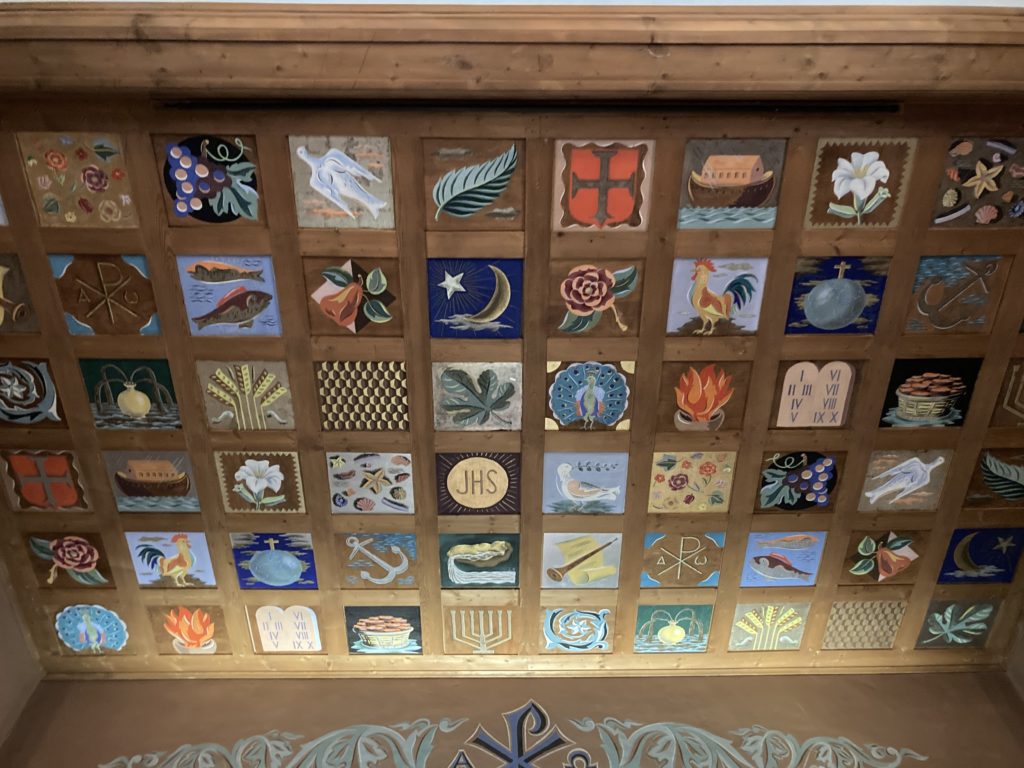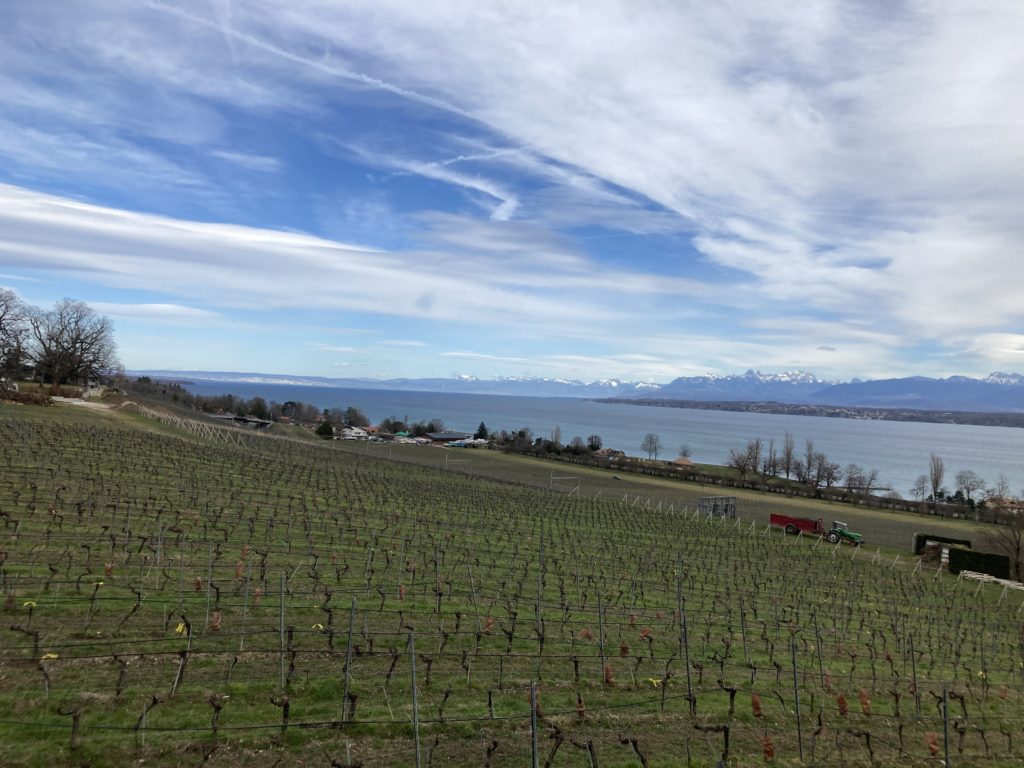Visiting Buildings
There is a rule that you should often visit churches and other buildings, if you are authorised to. You can often find something interesting. In the case of the Temple De Crans-près-Céligny it’s the kitsch paintings and blue colour.





The other reason is for the view when you are outside, especially on a clear day. You can see from Geneva and it’s Jet D’eau to the other side of the lake, with the Alps and occassional trains.
The third and superficial reason to visit is that you can get a Camino De Santiago Stamp. The stamp is inside the church, on the left as you enter. What’s amusing is that just one village away, in Celigny you can also get a Camino Stamp.
I have seen many intereting sites, in churches, which is why I like to visit them. It’s not about religion, but about culture and local context. In Gingins there is a very old tombstone, in another there is a block of marble that Michelangelo started to carve but never finished. In the church above the thing that struck me is the blue. Usually churches are painted white or left gray. This one is a strong blue. It’s lighter, and more vibrant. It feels warm. It has a wooden organ in the back but I forgot to photograph it.
Missing Bees
Today when I walked by some woods I noticed that the beehives have gone and I am not sure why. Was it because of the storm winds, where owners chose to keep the bees safe, or to avoid the coming rain? It’s a small detail with big consequences., When I have walked that path, in summer, with the sunflowers on the other side, I have seen a bee superhighway. If the bees have been moved permanently then it will be quieter.
